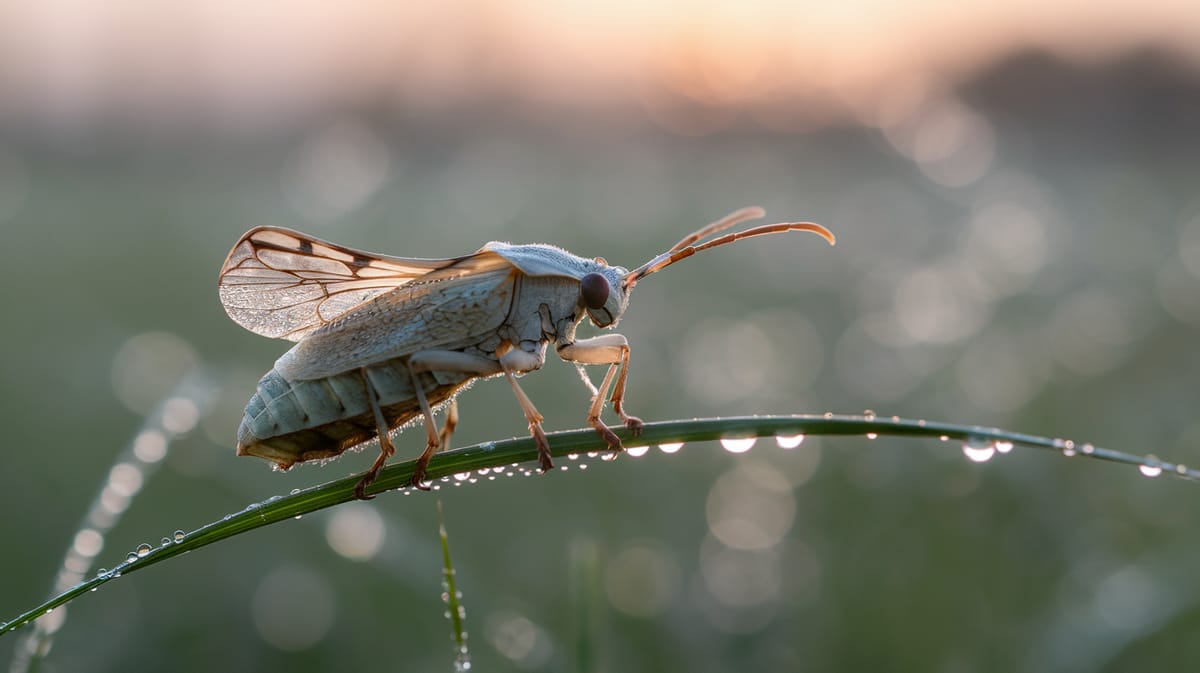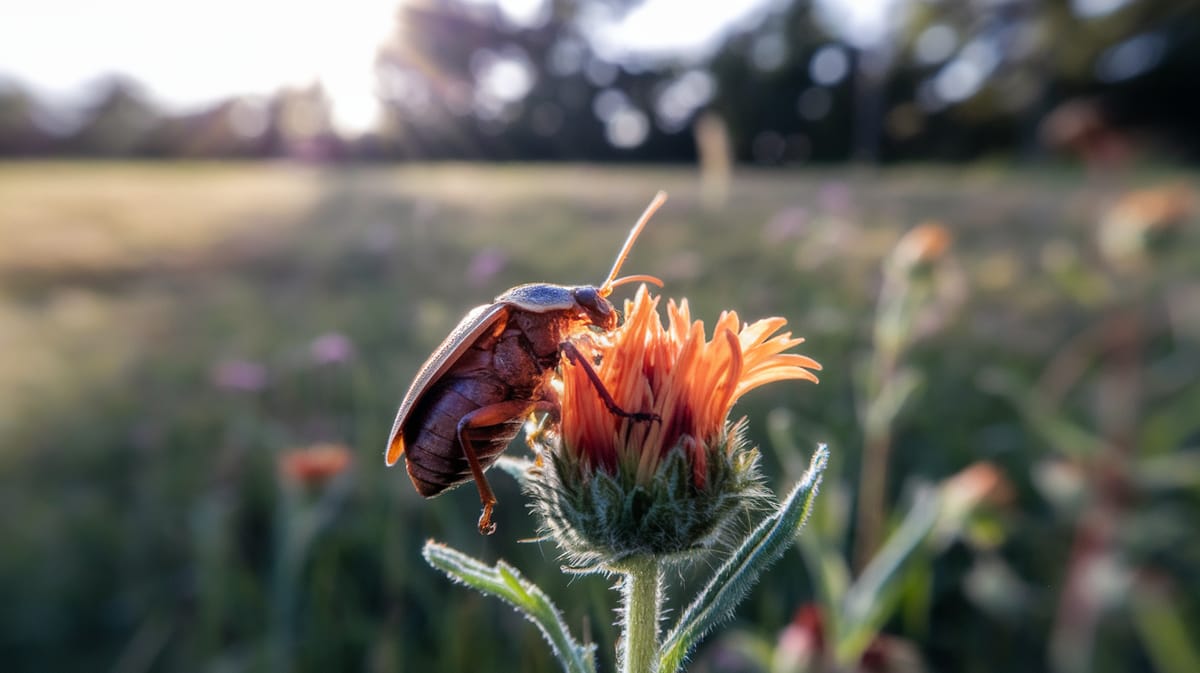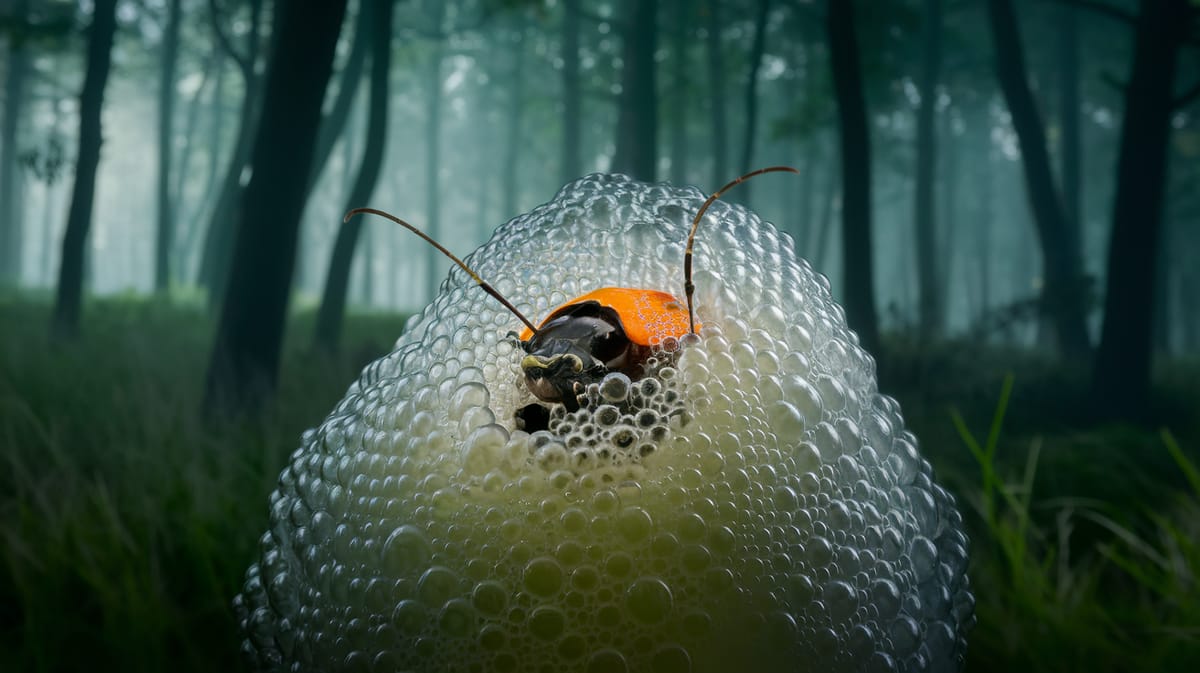Meadow Spittlebug
Jumping through meadows, the Meadow Spittlebug is known for its frothy, protective foam nests and role as a key indicator of ecosystem health. Its presence helps maintain the balance of plant life.

Key Insights at a Glance
Did You Know?
Taxonomy & Classification
Meadow Spittlebugs are fascinating for their unique ability to produce protective foam, which shields them from predators and harsh weather. Let's understand the evolutionary journey and classification of these remarkable herbivores.
Global Presence
Philaenus, including the Meadow Spittlebug, is found across Europe, Asia, and North America, illustrating its adaptability to diverse climates.
Evolutionary Success
Originating millions of years ago, these insects have adapted to various environments, surviving glaciation events and thriving in temperate regions.
Lifecycle and Growth
A remarkable journey of transformation from Egg to Adult.
Egg
Eggs are laid on plant stems in late summer, overwintering to hatch in spring when conditions are favorable.
Nymph
Nymphs produce protective frothy spittle masses while they feed and grow, undergoing five molts to reach adulthood.
Adult
Adults emerge fully winged, feeding on plant sap and continuing the reproductive cycle through mating.
Dietary Habits
This sap-sucking insect extracts nutrients from various plants, using specialized mouthparts to feed on xylem and phloem sap.
| DIET TYPE | DESCRIPTION |
|---|---|
| Primary Diet | Primarily feeds on the sap of grasses and herbaceous plants, utilizing its piercing-sucking mouthparts. |
| Secondary Diet | Occasionally feeds on the sap of woody shrubs and trees when primary food sources are scarce. |
| Occasional | Rarely consumes the sap of unusual plants during extreme environmental changes or resource shortages. |

Behaviour and Adaptations
Discover the fascinating traits of the Meadow Spittlebug that ensure its survival and success.
Protective Foam
Produces spittle-like foam to shield itself from predators and dehydration.
Jumping Ability
Exceptional jumping skills allow rapid escape from threats, reaching impressive distances.
Sap-feeding Efficiency
Efficiently extracts nutrients from plant sap without causing significant damage to host plants.
Ecosystem Impact
Meadow Spittlebugs play a crucial role in maintaining ecological harmony.
Nutrient Cycling
Their feeding activity helps recycle nutrients, enriching soil health.
Food Web Support
Serves as prey for birds and predators, maintaining biodiversity.
Plant Interaction
Affects plant growth, influencing plant community dynamics.
Conservation Challenges
Understanding and addressing the major threats to Meadow Spittlebug populations.
Chemical Exposure
Pesticides and fertilizers reduce spittlebug populations by contaminating their habitats.
Habitat Loss
Agricultural expansion and urbanization lead to the destruction of spittlebug habitats.
Climate Change
Altered weather patterns disrupt spittlebug life cycles and habitats.
Frequently Asked Questions
How long do Meadow Spittlebug live?
Meadow Spittlebugs typically live for about one year. Their lifecycle includes egg, nymph, and adult stages. The eggs are laid in late summer and hatch in spring. Nymphs develop into adults by early summer, completing the cycle.
What do Meadow Spittlebug eat?
Meadow Spittlebugs primarily feed on plant sap from a variety of herbaceous plants and grasses. They use their piercing mouthparts to extract fluids from the xylem of plants, which provides them with nutrients necessary for growth and development.
Are Meadow Spittlebug poisonous?
Meadow Spittlebugs are not poisonous to humans or animals. While they feed on plant sap, they do not produce toxins or pose any significant threat to humans or pets. Their primary impact is on agriculture, where they can affect plant health.
Are Meadow Spittlebug endangered?
Meadow Spittlebugs are not currently considered endangered. They are widespread and commonly found across Europe and North America. Their populations are stable, and they adapt well to various habitats, including agricultural areas and grasslands.
What do Meadow Spittlebug symbolize?
Meadow Spittlebugs do not have a widely recognized symbolic meaning. In some contexts, they might symbolize adaptability or resilience due to their ability to thrive in diverse environments and conditions. However, they are generally not associated with specific cultural or symbolic meanings.
Do Meadow Spittlebug bite?
Meadow Spittlebugs do not bite humans or animals. They have specialized mouthparts designed for piercing plant tissues to access sap. Their feeding habits are limited to plants, and they pose no direct threat to humans or pets.
What color are Meadow Spittlebug?
Meadow Spittlebugs vary in color but are generally light brown, gray, or mottled, which helps them blend into their surroundings. This coloration provides camouflage against predators and is often accompanied by markings that enhance their inconspicuous appearance.
Does a Meadow Spittlebug have wings?
Yes, adult Meadow Spittlebugs have wings. Their wings are well-developed and allow them to fly short distances. This mobility aids in finding new food sources and escaping predators, contributing to their survival in various habitats.
What does a Meadow Spittlebug look like?
Meadow Spittlebugs are small, about 6 to 8 mm long, with a stout body. They have a distinctive hump-backed shape, with brown or gray coloration. Their wings are folded over their back, and they have prominent eyes and short antennae.
Is a Meadow Spittlebug an insect?
Yes, a Meadow Spittlebug is an insect. It belongs to the order Hemiptera, which includes true bugs. Like other insects, it has a three-part body structure (head, thorax, abdomen), six legs, and wings, although only the adults have fully developed wings.
Related Insects
Discover insects with similar characteristics to Meadow Spittlebug - including shared habitats, diets, and taxonomic classifications
Share this profile
Help others discover Meadow Spittlebug
